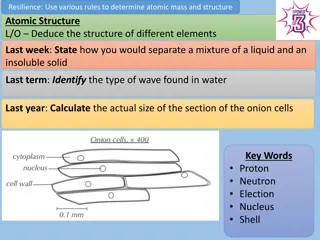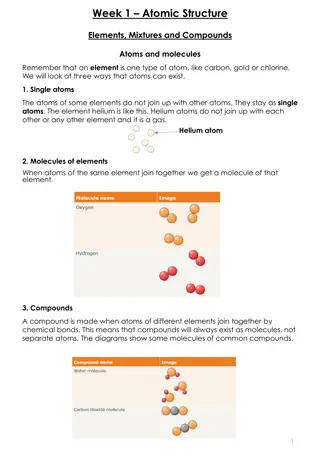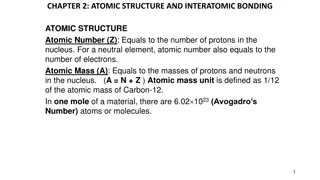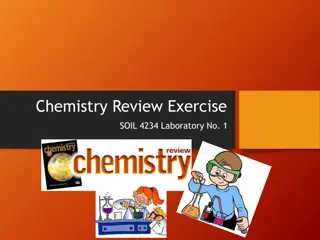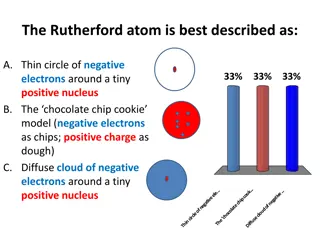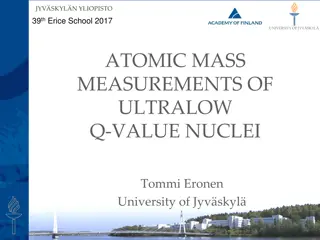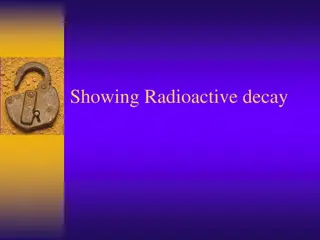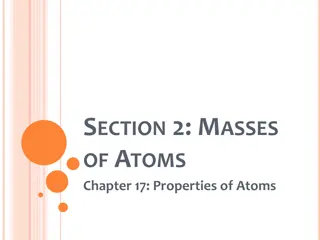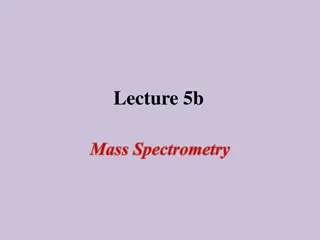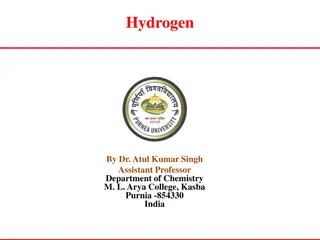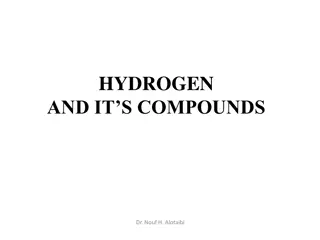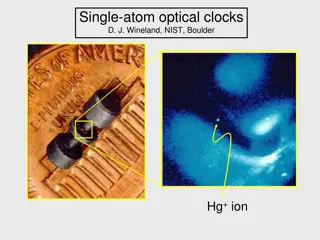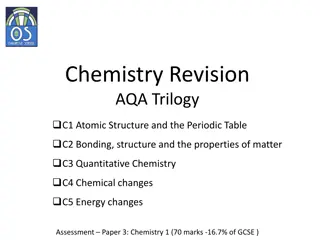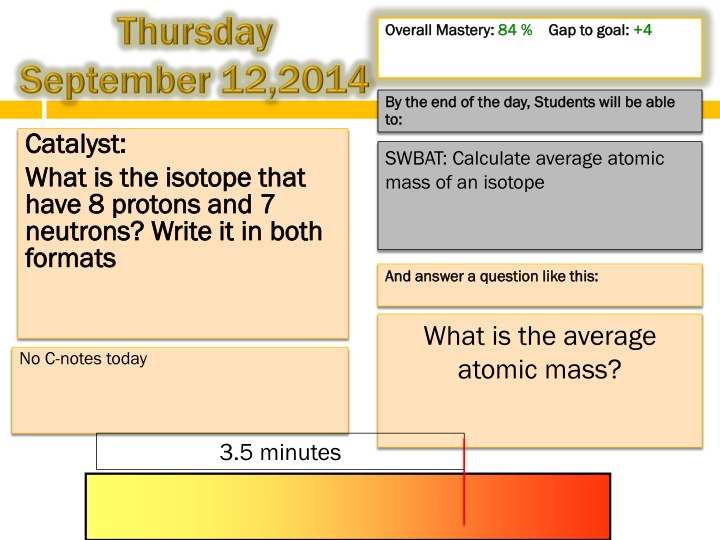
Average Atomic Mass and Isotopes in Chemistry
Explore the concept of average atomic mass and isotopes in chemistry, learn how to calculate the average atomic mass of an element, and discover the importance of isotopic abundance in natural elements. Dive into the world of atomic structure and the periodic table to deepen your understanding of chemistry.
Download Presentation

Please find below an Image/Link to download the presentation.
The content on the website is provided AS IS for your information and personal use only. It may not be sold, licensed, or shared on other websites without obtaining consent from the author. If you encounter any issues during the download, it is possible that the publisher has removed the file from their server.
You are allowed to download the files provided on this website for personal or commercial use, subject to the condition that they are used lawfully. All files are the property of their respective owners.
The content on the website is provided AS IS for your information and personal use only. It may not be sold, licensed, or shared on other websites without obtaining consent from the author.
E N D
Presentation Transcript
Overall Mastery: Overall Mastery: 84 % 84 % Gap to goal: Gap to goal: +4 +4 By the end of the day, By the end of the day, Students will to: to: Students will be able be able Catalyst: Catalyst: What is the isotope that What is the isotope that have 8 protons and 7 have 8 protons and 7 neutrons? Write it in both neutrons? Write it in both formats formats SWBAT: Calculate average atomic mass of an isotope And answer a question like this: And answer a question like this: What is the average atomic mass? No C-notes today 3.5 minutes
Agenda Catalyst 5 minutes Weighted average intro video 5 minutes Average atomic mass Quick notes 10 mins Candium Lab 30 mins Closing/ Exit ticket 10 minutes
Get organized- On your unit 3 (Purple) TOC Table of Contents Date Assignment 9/5 Atomic Theory Graphic Organizer 9/6 Bohr Model and PT families chart Isotope C-notes 9/10 9/12 Average atomic Mass Quick Notes
http://www.youtube.com/watch?v= 7fYpEnxhKQk
What is the Average Atomic Mass? the weighted average of the weighted average of the atomic masses the atomic masses of all naturally occurring naturally occurring isotopes of an element isotopes of an element. . of all
Where do we find the average atomic mass? ON THE PERIODIC TABLE! Average Atomic Mass
What is the difference?? The A or Mass Number is the mass of that specific isotope The number on the periodic table is the average of all the existing isotopes
Isotopes have occur at different rates Percentage Natural Abundance 69.17% 30.83% Isotope Mass Number Copper-63 Copper-65 63 65 ABUNDANCE IS HOW OFTEN THAT ISOTOPE OCCURS IN NATURE
Calculating the average atomic mass Percentage Natural Abundance 69.17% 30.83% Isotope Mass Number Copper-63 Copper-65 63 65 Step 1: Change the percent abundance to decimals. 69.17%/ 100 = .6917 30.83%/ 100 = .3083 Step 2: multiply the mass number by the percent abundance in decimal form and add those products together. (63 x 0.6917) + (65 x 0.3083) = 63.61 amu
Step 2: multiply the mass number by the percent abundance in decimal form and add those products together. (63 x 0.6917) + (65 x 0.3083) = 63.61 amu
You Try! Percentage Natural Abundance 72.2% 27.8% Isotope Mass Number Rubidium-85 Rubidium-87 85 87 Step 1: Change the percent abundance to decimals. 72.2%/ 100 = .722 27.8%/ 100 = .278 Step 2: multiply the mass number by the percent abundance in decimal form and add those products together. (85x 0.722) + (87 x .278) =85.55 amu
Candium! Take 2 mins to SILENTLY read the objective and introduction. On your desk- Triple beam balance A candy Cup do not eat any now you will have a chance later ** Where it says skittles I mean pretzel m&ms You will be following the procedure and filling out the data table.
Balance Reminders: Before you take the mass Make sure that it is on grams Zero the balance With the weighing paper
EXIT TICKET: Complete the conclusion questions

